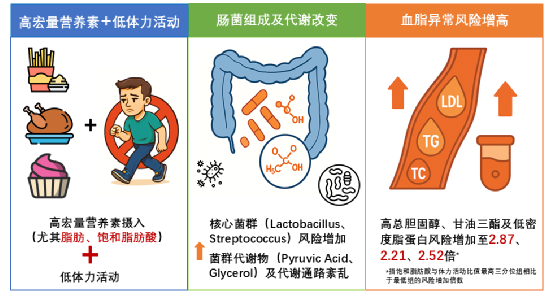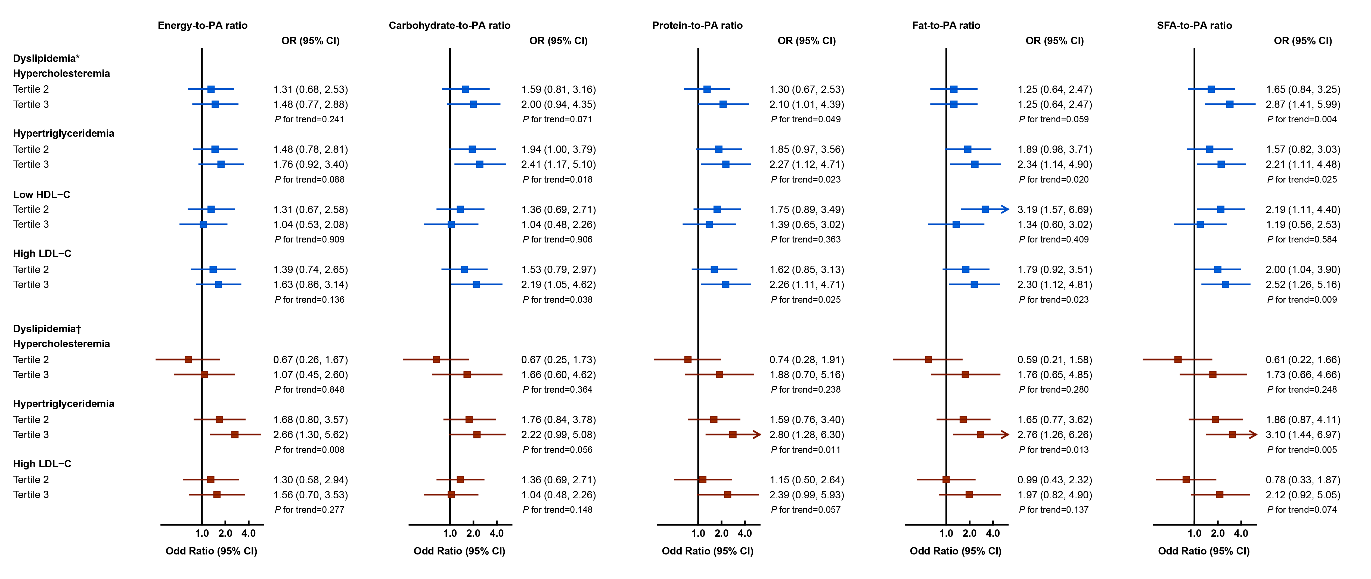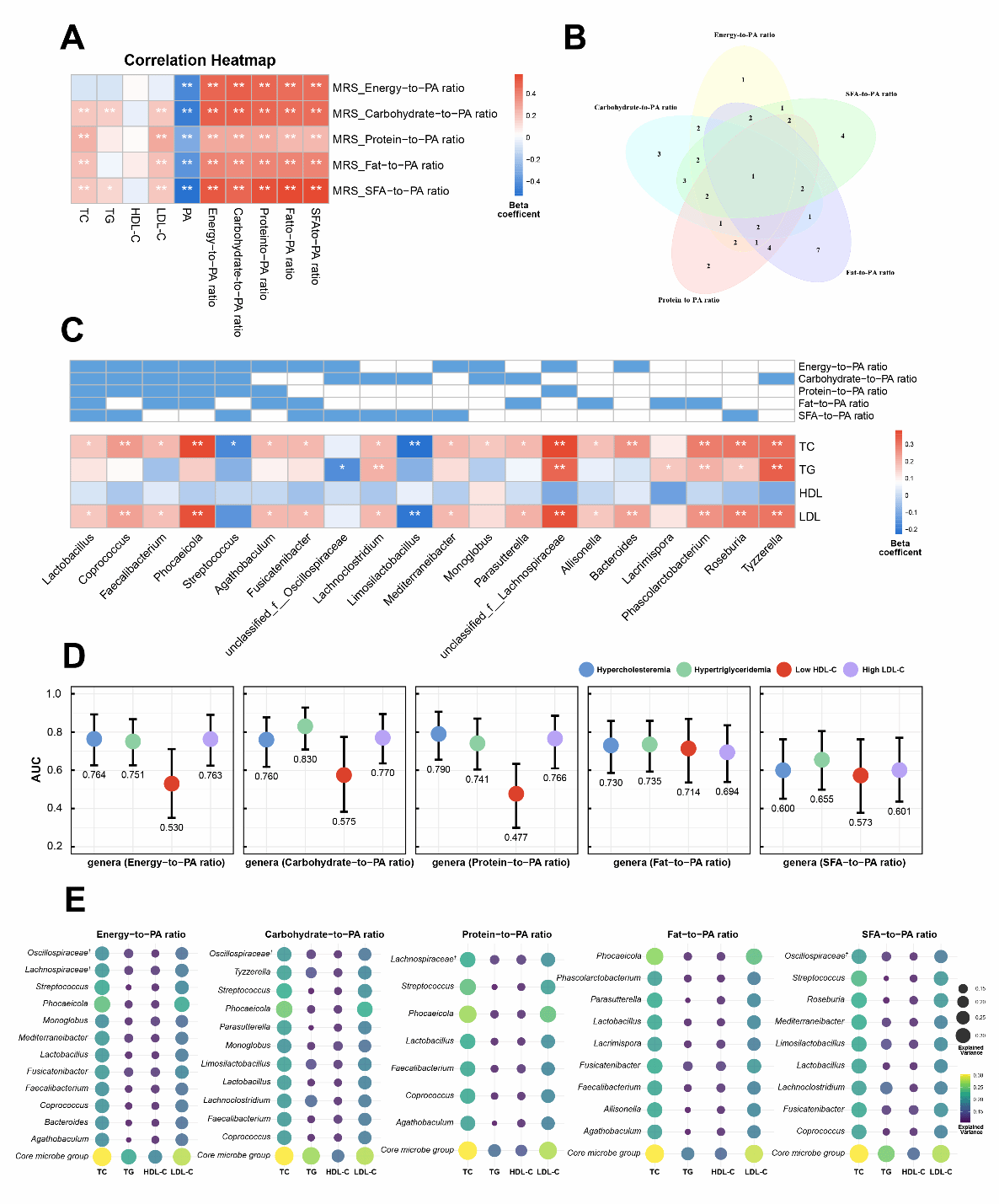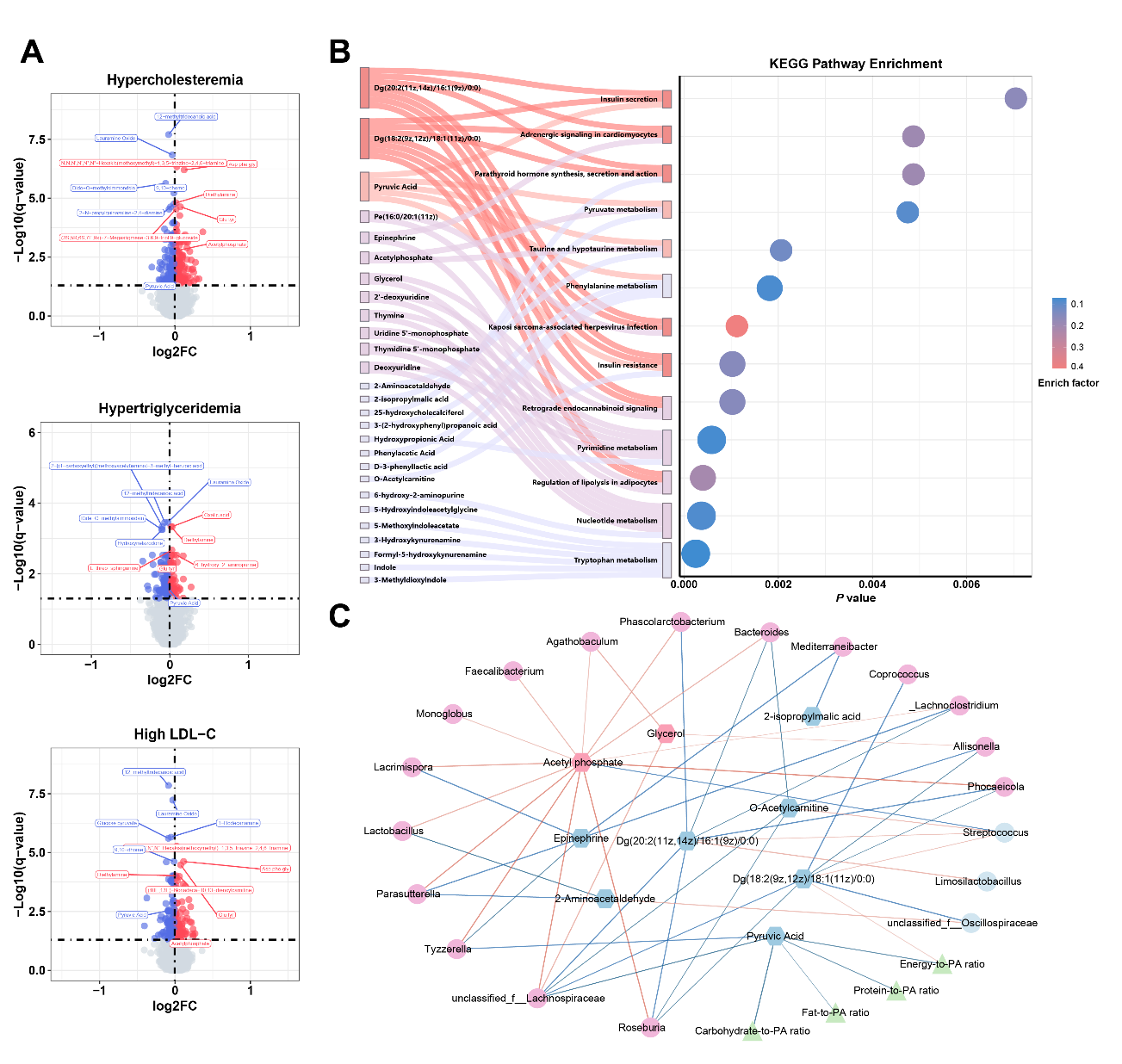On May 15, 2025, Department of Clinical Nutrition of the First Affiliated Hospital (FAH) of Xi’an Jiaotong University (XJTU) and Professor Liu Xin’s team from School of Public Health of XJTU jointly published a research article entitled "Potential Modulatory Roles of Gut Microbiota and Metabolites in the Associations of Macronutrient-to-Physical Activity Ratios with Dyslipidemia" in Journal of the American Heart Association. Liao Xia, Deputy Director of Department of Clinical Nutrition and Professor Liu Xin are the corresponding authors. Based on metabolic syndrome or high-risk individuals, the index of "macronutrient-to-physical activity ratio" was innovatively constructed, the correlation between energy intake and consumption balance and dyslipidemia was systematically revealed, and the potential modulatory role of gut microbiota and their metabolites in this process was identified in this study.

In the present investigation, a new index of "macronutrient-to-physical activity ratio" was constructed, and its relationship with dyslipidemia was systematically evaluated, and the potential mechanism was elucidated based upon gut microbiome and metabolomics. The results showed that the macronutrient-to-physical activity ratio (especially the intake of high fat or high saturated fatty acids) was significantly correlated with the increased levels of total cholesterol (TC), triglyceride (TG) and low-density lipoprotein-cholesterol (LDL-C), whereas no significant correlation was observed for energy-to-physical activity ratio. Compared with the lowest saturated fatty acid-physical activity ratio group, the risk of dyslipidemia in the highest tertile group was elevated by roughly 2-3 times.

The research team applied machine-learning algorithms to construct microbiome risk scores based on different macronutrient-to-physical activity ratios, revealing significant positive association between these microbiome risk scores and blood lipid levels. In this study, the team also found that certain bacterial genera were significantly associated with multiple macronutrient-to-physical activity ratios and blood lipids, suggesting their potential important roles (such as Lactobacillus, Streptococcus, Phascolarctobacterium and Tyzzerella, etc.). In addition, the core bacterial genera were screened, which had high predictive performance for dyslipidemia (the highest AUC= 0.830).

In metabonomic analysis, the differential metabolites of dyslipidemia were enriched in endocrine regulation, carbohydrate metabolism and amino acid metabolism pathway. Further analysis identified that 10 key metabolites were closely correlated with the signaling pathway of dyslipidemia, among which 9 metabolites were significantly associated with the above-mentioned core bacterial genera. For example, acetyl phosphate, which was elevated in hypercholesterolemia and in participants with high LDL-C, was positively associated with 13 genera contributing to the macronutrient-to-physical activity ratios. In contrast, pyruvic acid, reduced in dyslipidemia participants, was negatively associated with Tyzzerella and the macronutrient-to-physical activity ratios.

The findings in this study revealed that reducing the intake of fat (especially saturated fatty acids) rather than total energy, combined with moderate physical activity, is the key factor to maintain healthy lipid profiles. Bacterial genera and key metabolite molecules which played a key role in the influence of these above lifestyles on blood lipids were identified. This study deepens the understanding of the relationship between "diet-physical activity balance" and healthy lipid profiles, providing reference for precise nutrition intervention strategies based on gut microbiota metabolism.
Full-text link: https://doi.org/10.1161/JAHA.124.040042